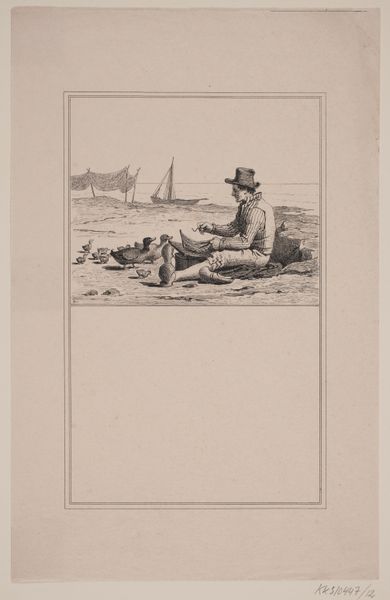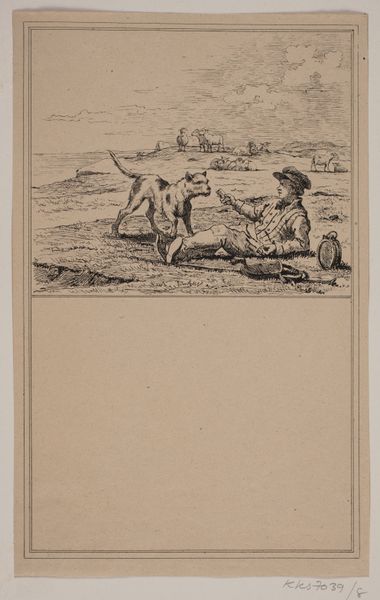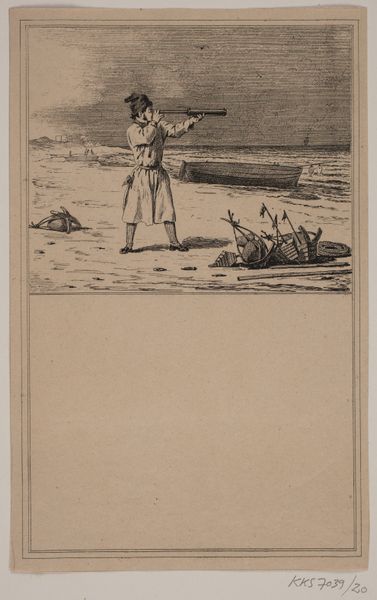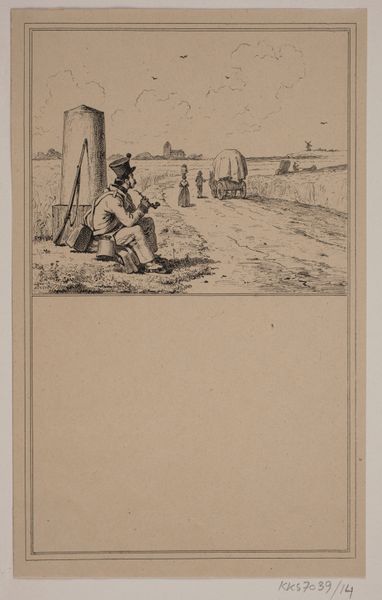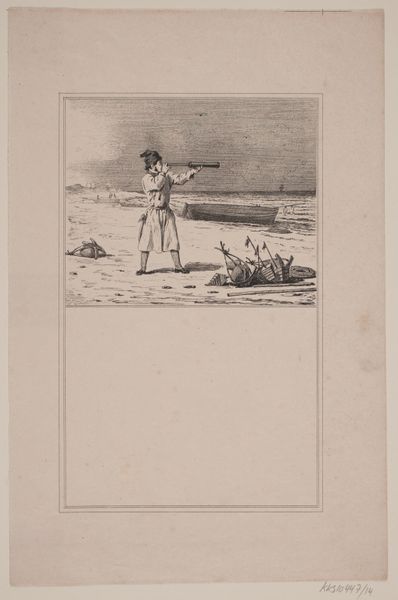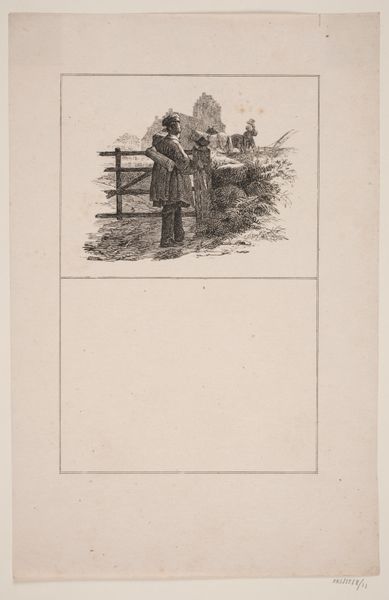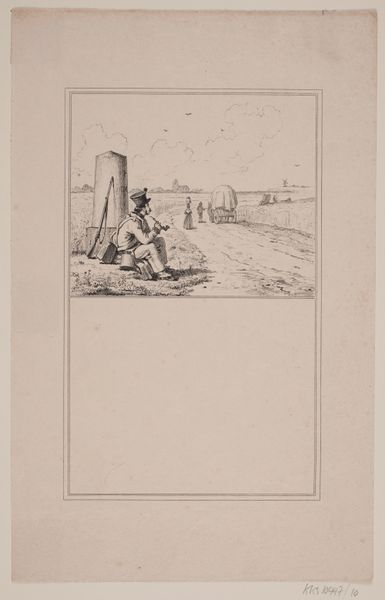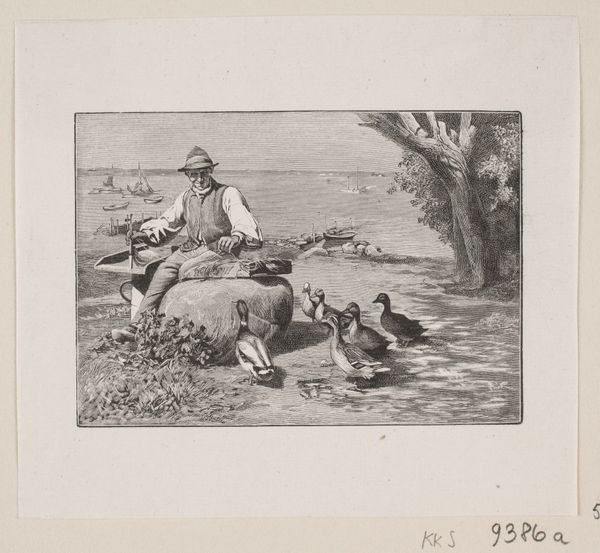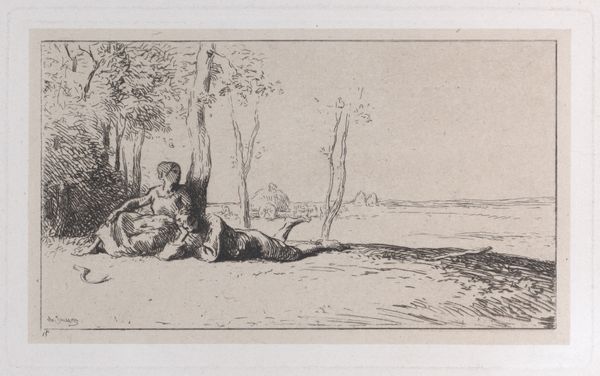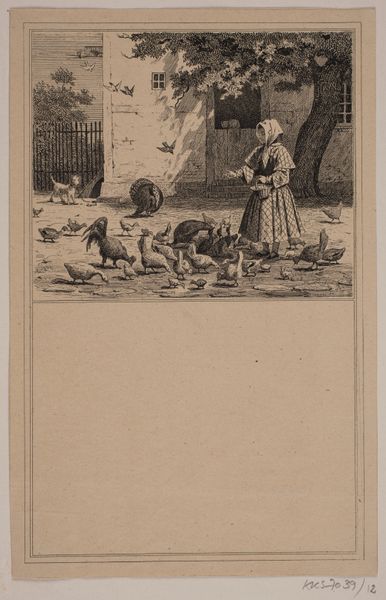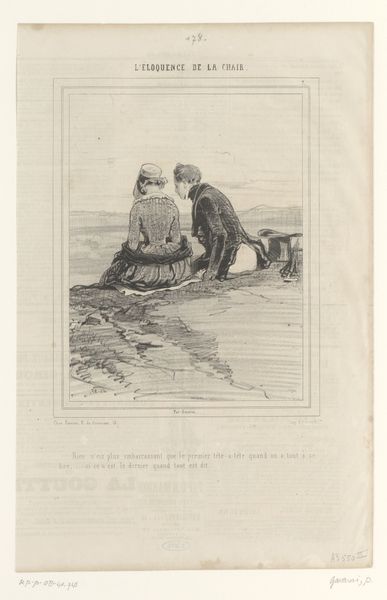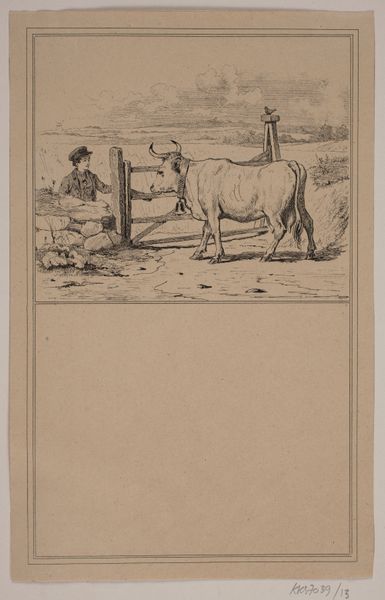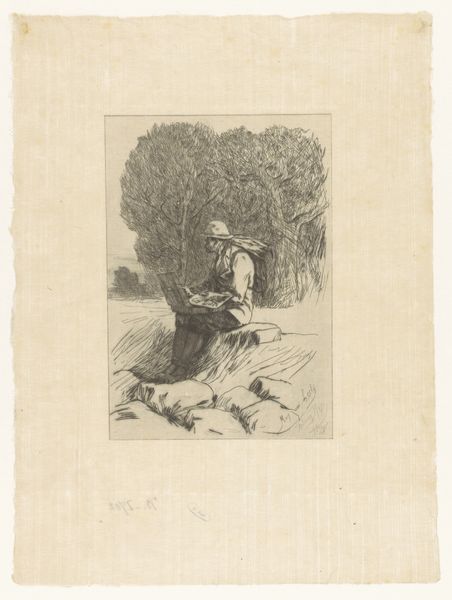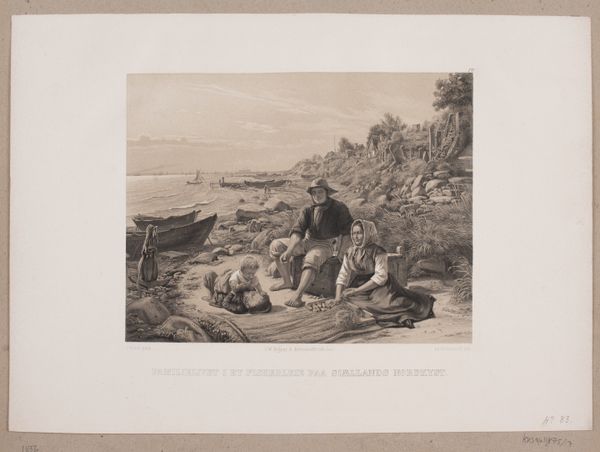
Fiskeren og anden. Nr. 17 i Chr. Winther og M. Rørbye, "25 Billeder for små børn" 1846
0:00
0:00
lithograph, print
#
lithograph
# print
#
landscape
#
genre-painting
Dimensions: 205 mm (height) x 130 mm (width) (brutto)
Editor: Here we have "The Fisherman and Duck. No. 17 in Chr. Winther and M. Rørbye, "25 Images for Small Children," a lithograph print from 1846, made by Adolph Kittendorff. It looks like a quiet, simple scene of a man feeding ducks on a beach. What stands out to you in this piece? Curator: What immediately strikes me is the means of production of this seemingly simple image. As a lithograph, it would have involved skilled labor, specifically in the preparation of the stone and the precise execution of the image. What can you tell about lithographic production versus printmaking from wood or metal in the same era? Editor: Well, from what I remember, lithography allowed for more tonal variation and a less rigid feel compared to woodcuts or engravings... But how does that influence its interpretation? Curator: Exactly. Consider that this print was intended "for small children." It's an inexpensive image, but it depicts a seemingly leisurely scene. Think about the consumption of this image in 1846, and what the relatively wide availability of prints made this way communicates about shifting notions of art and accessibility? Was "art" shifting its cultural weight toward mass-produced images? Editor: That’s an interesting point. The ease of production makes it accessible, almost like early mass media. It makes you wonder how the social status of printed art changed how people perceived its artistic merit and its audience. Curator: Precisely. Did the increase in prints erode class boundaries around who has access to art, and why, or why not? So this image makes me curious how notions of access change as material possibilities open up, and whether this makes “fine art” any less precious, or whether class and other boundaries simply reproduce. Editor: I never really thought about it that way. Focusing on the process and material definitely sheds light on social questions and the artwork’s accessibility in its time. Curator: Exactly! Looking closely at the materials and methods helps us understand not just what's depicted, but who had access to art, how art related to social status, and ultimately, the broader context of art and culture in that moment.
Comments
No comments
Be the first to comment and join the conversation on the ultimate creative platform.
